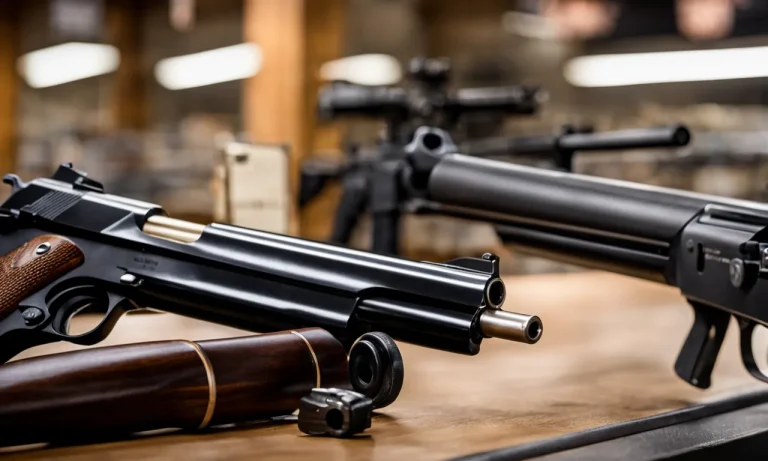How Much Do Thrift Stores Pay For Clothes? The Complete Guide
Selling used clothing to thrift stores is a great way to clean out your closet and make some extra cash. But how much can you really expect to earn?
If you’re short on time, here’s a quick answer: Most thrift stores pay between 10-25% of the estimated resale value for clothing items. The exact amount depends on the brand, condition, and current demand.
In this comprehensive guide, we’ll break down exactly how thrift store clothing buying works and how much you can get paid. We’ll cover everything you need to know about selling clothes to thrift stores for profit, including factors that affect payouts, tips for getting the most money, which stores pay the highest rates, and much more.
How Thrift Stores Price and Buy Used Clothing
The Thrift Store Business Model
Thrift stores operate on a unique business model that involves buying used items from individuals or organizations and reselling them to generate revenue. These stores play a crucial role in promoting sustainability by giving a second life to pre-loved clothing and reducing waste.
Unlike traditional retail stores, thrift stores rely on donations and carefully curate their inventory to offer a wide range of affordable options to their customers.
Pricing Factors
Thrift stores use various factors to determine the price of used clothing. While the specific pricing strategies may vary between stores, common factors include the brand, quality, style, and condition of the item.
Popular brands and high-quality clothing may be priced higher, while items in poorer condition or with less demand may have lower price tags. Additionally, some thrift stores might consider the demand and market value of certain items, resulting in higher prices for trendy or popular pieces.
Condition Guidelines
Thrift stores have specific guidelines for accepting and pricing clothing based on their condition. Generally, items in excellent condition, with minimal signs of wear and tear, will be priced higher. On the other hand, items with stains, holes, or missing buttons might be priced lower or not accepted at all.
It’s important to remember that thrift stores aim to provide quality items to their customers, so they carefully inspect each piece before determining its price.
Buying Policies
Thrift stores have different buying policies that dictate how they acquire used clothing. Some stores may purchase items directly from individuals, offering them a certain amount of money based on the item’s condition and market value. Others may rely solely on donations from the community.
It’s worth noting that thrift stores often have limited resources and may prioritize certain types of clothing or specific seasons depending on their inventory needs.
Average Payouts by Thrift Store
Uptown Cheapskate
Uptown Cheapskate pays approximately 10-35% of the estimated resale value for items they accept. The payout percentage depends on the brand, demand, and condition of the clothes.
To sell clothes to Uptown Cheapskate, you can bring them to any of their stores. The buyer will assess the clothes and make you an offer. If you accept the offer, you will be paid in cash or given store credit.
Buffalo Exchange
Buffalo Exchange is a popular buy-sell-trade clothing store that offers a unique shopping experience. This store has a reputation for paying higher prices for trendy and in-demand clothing items.
On average, Buffalo Exchange pays between 30% to 50% of the selling price for clothes in good condition. It’s worth noting that their prices may vary depending on the brand, style, and current fashion trends.
Crossroads Trading Co.
Crossroads Trading Co. is another well-known buy-sell-trade clothing store with locations across the United States. They are known for offering competitive payouts for gently used clothing.
On average, Crossroads pays around 30% to 40% of the selling price for clothes in good condition. However, it’s important to keep in mind that their payouts can vary depending on the brand, style, and demand for specific items.
Plato’s Closet
Plato’s Closet is a popular thrift store chain that focuses on buying and selling trendy, gently used clothing for young adults and teenagers.
They typically pay around 30% to 40% of the selling price for items that are in style and in good condition. However, it’s important to remember that Plato’s Closet is selective in the brands and styles they accept, so not all items may be eligible for payout.
ThredUp
ThredUp is an online consignment and thrift store that offers a convenient way to sell and buy secondhand clothing. When it comes to payouts, ThredUp provides an estimate based on the brand, category, and condition of the items.
On average, ThredUp pays sellers around 5% to 80% of the estimated resale value of their clothing. It’s important to note that ThredUp takes a commission from the final selling price.
Local Boutiques
Local boutiques can vary in terms of the payout they offer for clothing items. Some may pay a flat rate per item, while others may offer a percentage of the selling price. It’s best to research and reach out to specific local boutiques in your area to inquire about their payout policies.
Keep in mind that the payout may depend on the condition, brand, and demand for the items you’re looking to sell.
Tips to Get the Most Money for Your Clothes
If you’re looking to make some extra cash by selling your clothes to thrift stores, it’s important to know how to maximize your profits. Here are some tips to help you get the most money for your clothes:
Sell In-Season Styles
Thrift stores are more likely to pay higher prices for clothes that are in demand. To increase your chances of getting a good price, sell clothes that are currently in season. This means that if it’s summer, focus on selling lightweight dresses, shorts, and tank tops.
If it’s winter, sell warm sweaters, coats, and boots. By selling clothes that are in high demand, you’ll have a better chance of getting top dollar for your items.
Clean and Press Items
Thrift stores prefer to buy clothes that are in good condition and ready to be put on the shelves. Before taking your clothes to a thrift store, make sure they are clean and free of any stains or odors. Additionally, consider pressing or steaming your items to give them a fresh, polished look.
Clothes that are in excellent condition are more likely to fetch higher prices.
Group Items by Type
When selling your clothes to thrift stores, it’s a good idea to organize them by type. This makes it easier for the store to evaluate and price your items. For example, group all your dresses together, separate your tops from your bottoms, and keep accessories in a separate bag.
By presenting your items in an organized manner, you’ll show the thrift store that you’ve taken the time to carefully select and prepare your clothes, which can lead to higher offers.
Check Current Trends
Before selling your clothes, take some time to research current fashion trends. Thrift stores are always on the lookout for trendy items that are in high demand. By staying up to date with the latest fashion trends, you can identify which of your clothes might be worth more money.
For instance, if animal prints are popular at the moment, your leopard print blouse might fetch a higher price. Keep an eye on fashion magazines, websites, and social media for inspiration.
Time Donations Strategically
Many thrift stores offer incentives for donating clothes, such as discount coupons or store credit. While it’s great to support charitable causes, it’s also important to time your donations strategically. Some thrift stores have specific days or weeks when they offer higher payouts for donations.
Consider holding onto your clothes until these special events occur to maximize your earnings.
Negotiate Respectfully
Don’t be afraid to negotiate with thrift stores when selling your clothes. While they may have set prices, there’s often room for negotiation. However, it’s important to approach negotiations respectfully.
Be polite and understanding, and provide reasons why you believe your clothes are worth a higher price. Remember, thrift stores are businesses too, and they need to make a profit. By maintaining a positive attitude and engaging in a respectful conversation, you may be able to secure a better deal.
Sell Designer and Branded Pieces Separately
If you have any designer or branded items in your collection, consider selling them separately from the rest of your clothes. Thrift stores often pay more for these types of items, as they can attract a different customer base.
By highlighting the value and uniqueness of your designer or branded pieces, you increase your chances of receiving a higher offer.
Should You Try Selling Clothes Online Instead?
If you’re considering selling your clothes, you might be wondering whether it’s better to sell them at a thrift store or try your luck online. While thrift stores can offer convenience and immediate payment, selling clothes online comes with its own set of advantages and disadvantages.
Before making a decision, it’s essential to weigh the pros and cons.
Pros of Selling Online
Selling clothes online opens up a world of possibilities. Here are some of the benefits:
- Wider audience: When you sell clothes online, you have access to a global marketplace. You can reach potential buyers from all over the world, increasing your chances of making a sale.
- Higher selling prices: Online platforms allow you to set your own prices, giving you the potential to earn more money compared to selling to a thrift store.
- Convenience: Selling clothes online can be done from the comfort of your own home. You don’t have to worry about transporting your items to a physical store.
- Flexibility: Online platforms often have flexible selling options, allowing you to choose between auctions, fixed prices, or even setting up your own online store.
Cons of Selling Online
While selling clothes online has its advantages, there are also some downsides to consider:
- Competition: With the vast number of online sellers, standing out from the crowd can be challenging. You’ll need to invest time and effort into creating attractive listings and marketing your items.
- Shipping and handling: When selling clothes online, you’ll be responsible for packaging and shipping the items to the buyers. This can be time-consuming and may require extra expenses for shipping materials.
- Return policies: Dealing with returns and customer complaints is an inevitable part of selling online. Having a clear return policy and addressing customer concerns promptly is essential for maintaining a positive reputation.
Platform Options
There are various online platforms available for selling clothes, each with its own strengths and weaknesses. Some popular options include:
- eBay: A well-established platform with a large user base, offering both auction-style and fixed-price listings.
- Poshmark: A mobile app focused on fashion, where you can sell both new and used clothing items.
- Depop: Popular among younger audiences, Depop allows you to sell clothes with a social media-like experience.
- Facebook Marketplace: A platform where you can sell items locally, making it a convenient option for those who prefer in-person transactions.
Is it Worth the Extra Effort?
Deciding whether selling clothes online is worth the extra effort depends on your individual circumstances and preferences. If you have unique or high-value items, selling them online could potentially fetch you a higher price.
However, if you value convenience and immediate payment, selling to a thrift store might be a better option. Ultimately, it’s important to consider your goals and weigh the pros and cons before making a decision.
Conclusion
Selling unwanted clothing to thrift stores can net you some decent cash quickly and easily.
While payouts vary by location and demand, most stores pay around 10-25% of estimated resale value. With valuable name brands in excellent condition, you could potentially earn hundreds of dollars.
By following tips to get the highest quotes, you can maximize your clothing payouts. Consider online selling alternatives too for niche and luxury items.
Overall, thrift stores offer a convenient way to clear clutter and make money – with the right items and negotiation tactics, your closet cleanout can pay off nicely!











